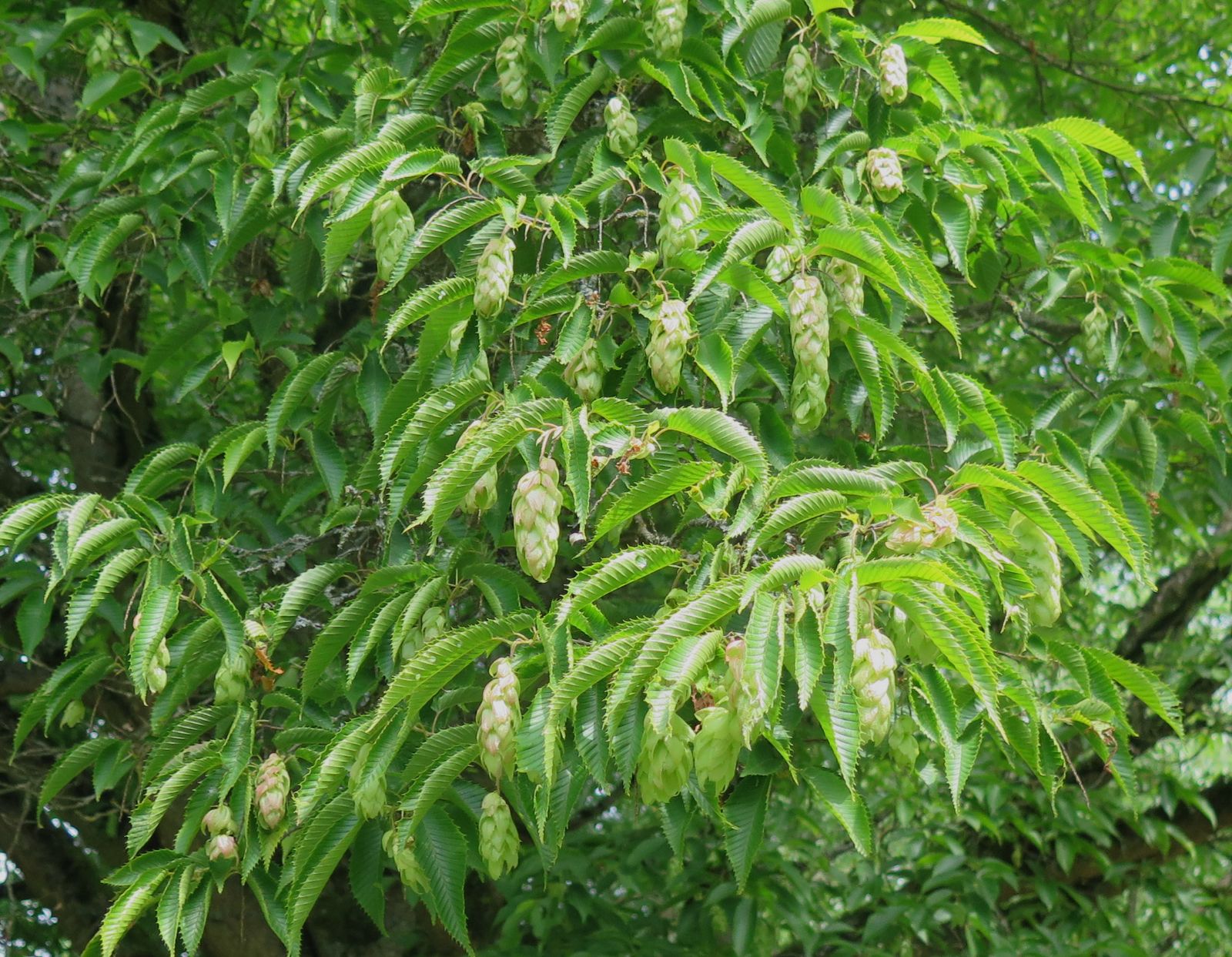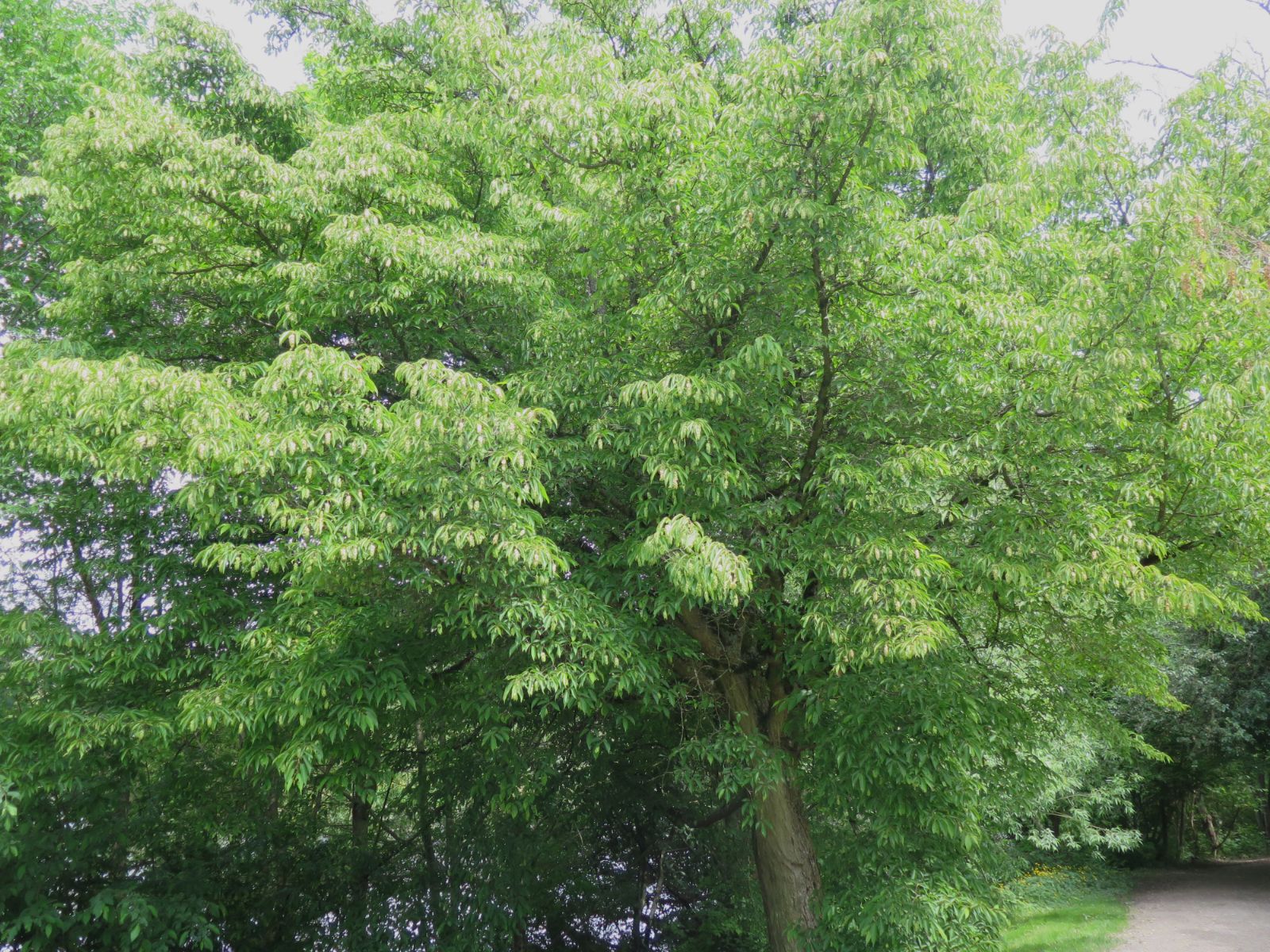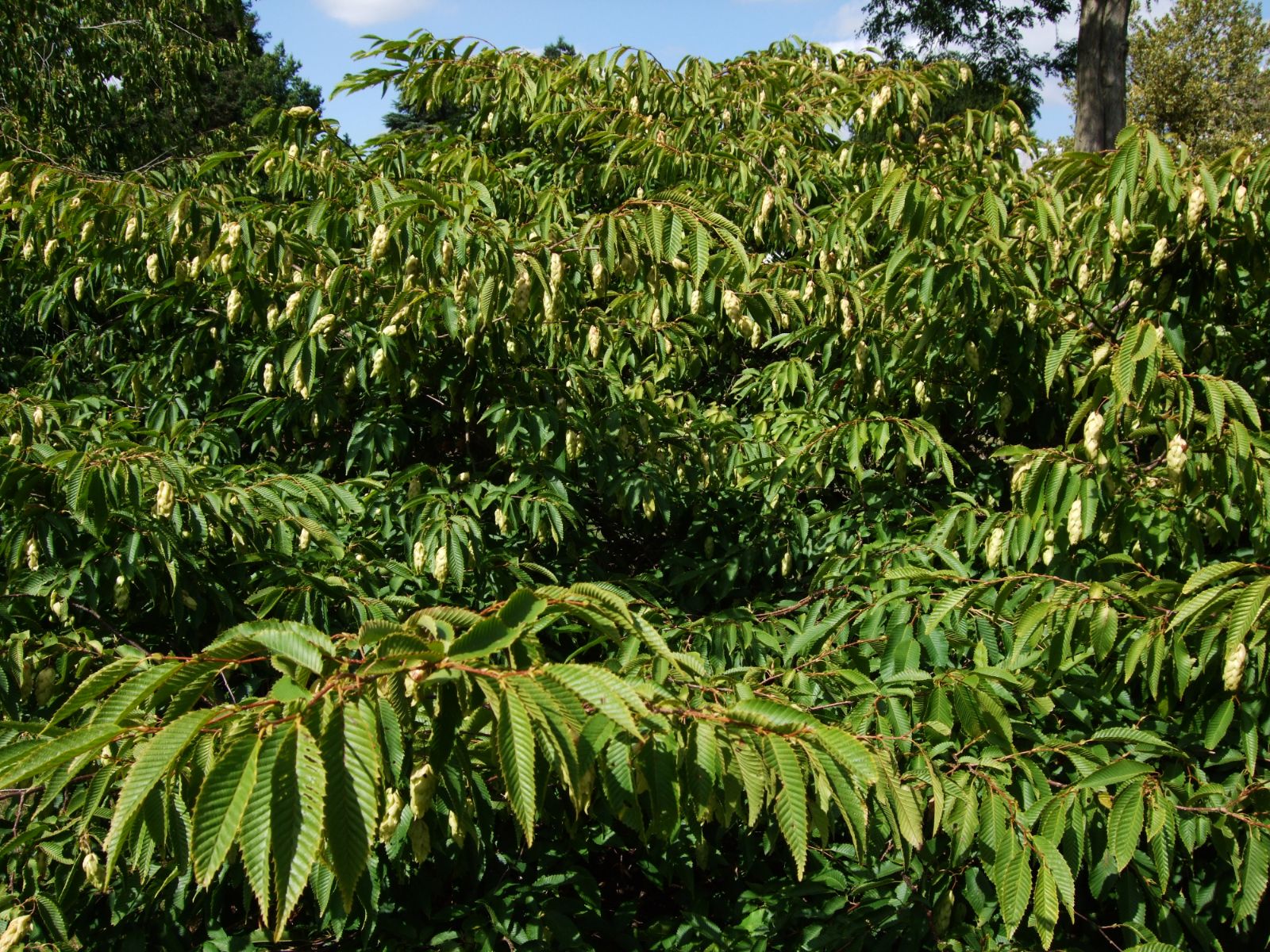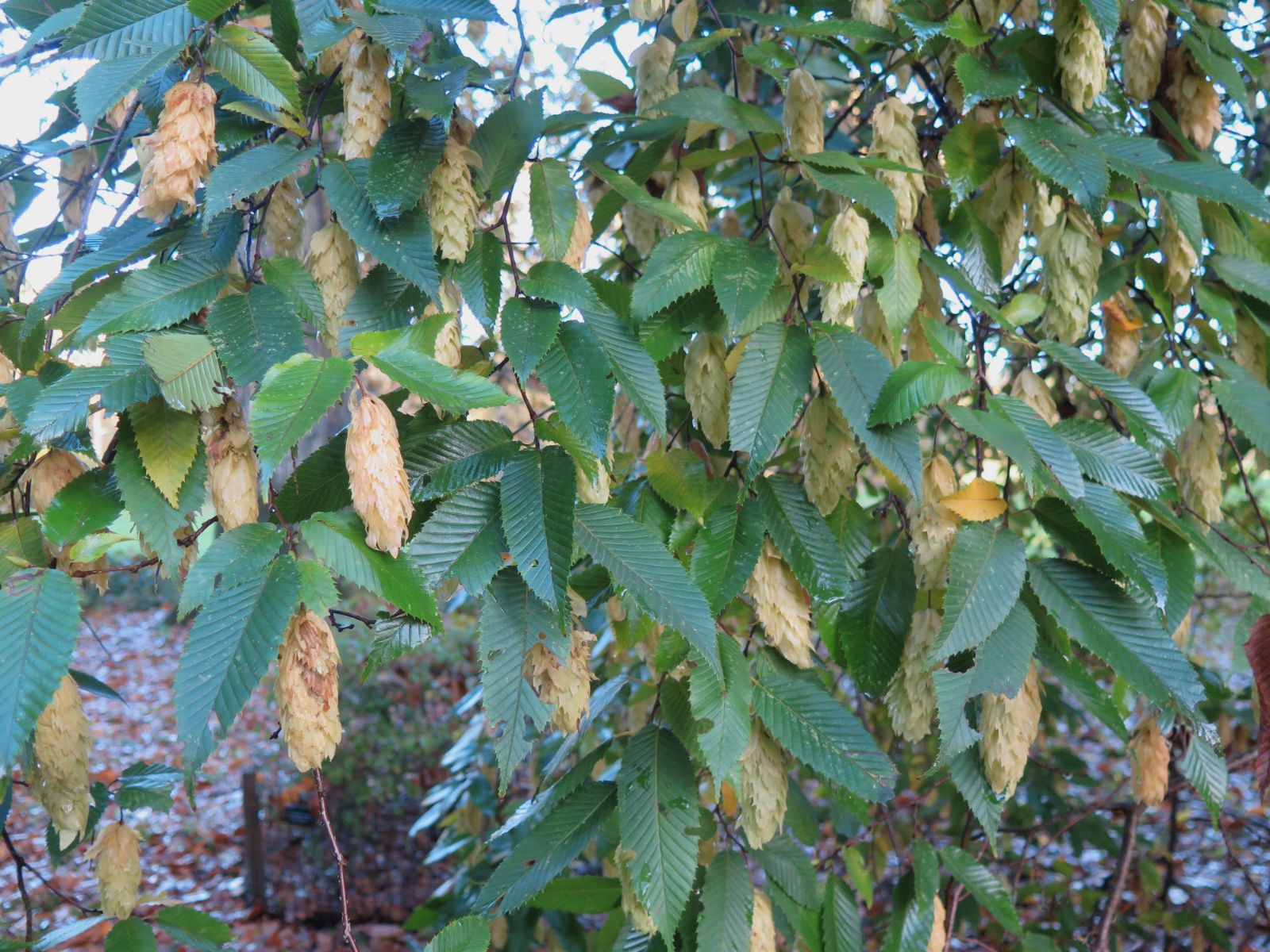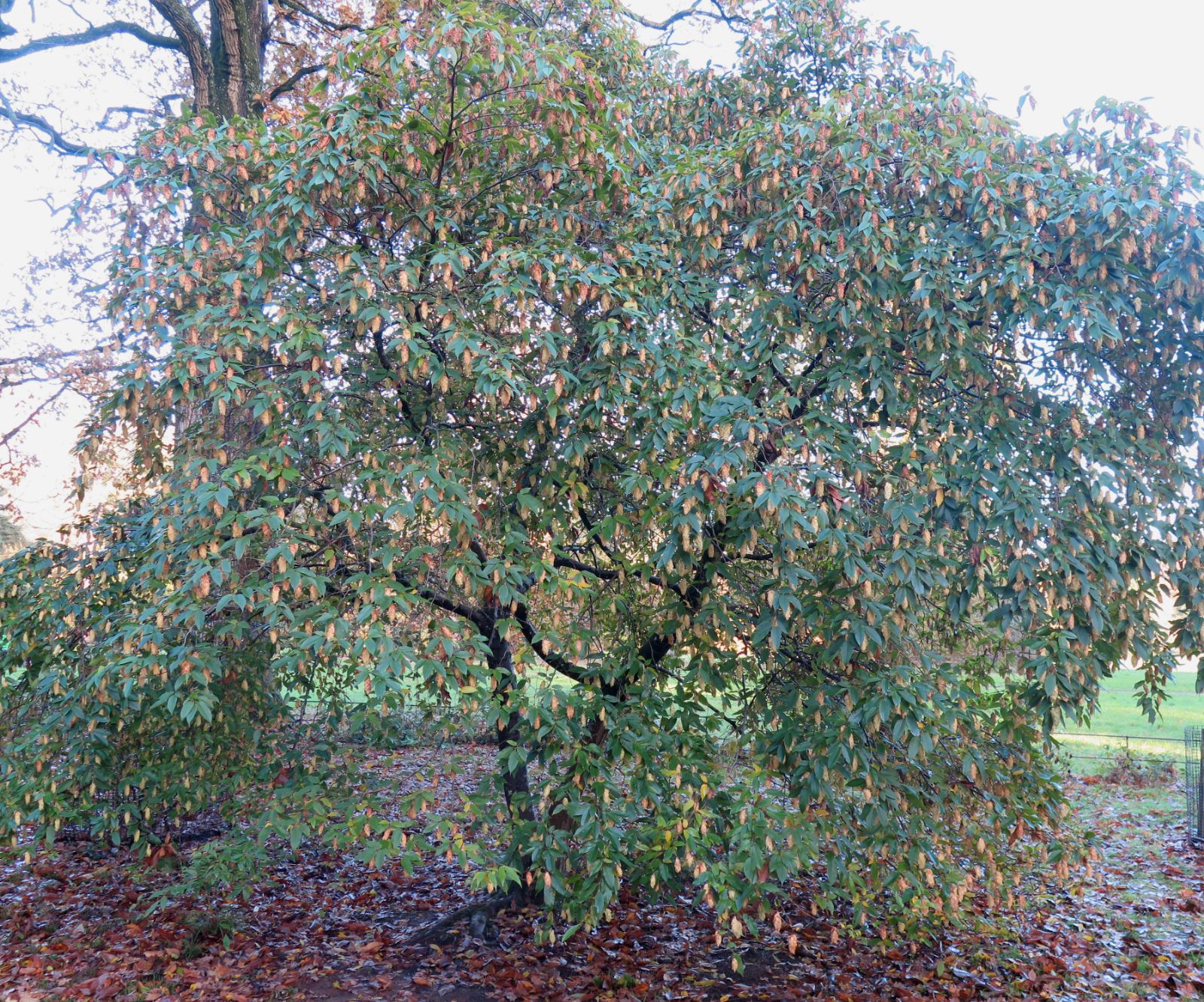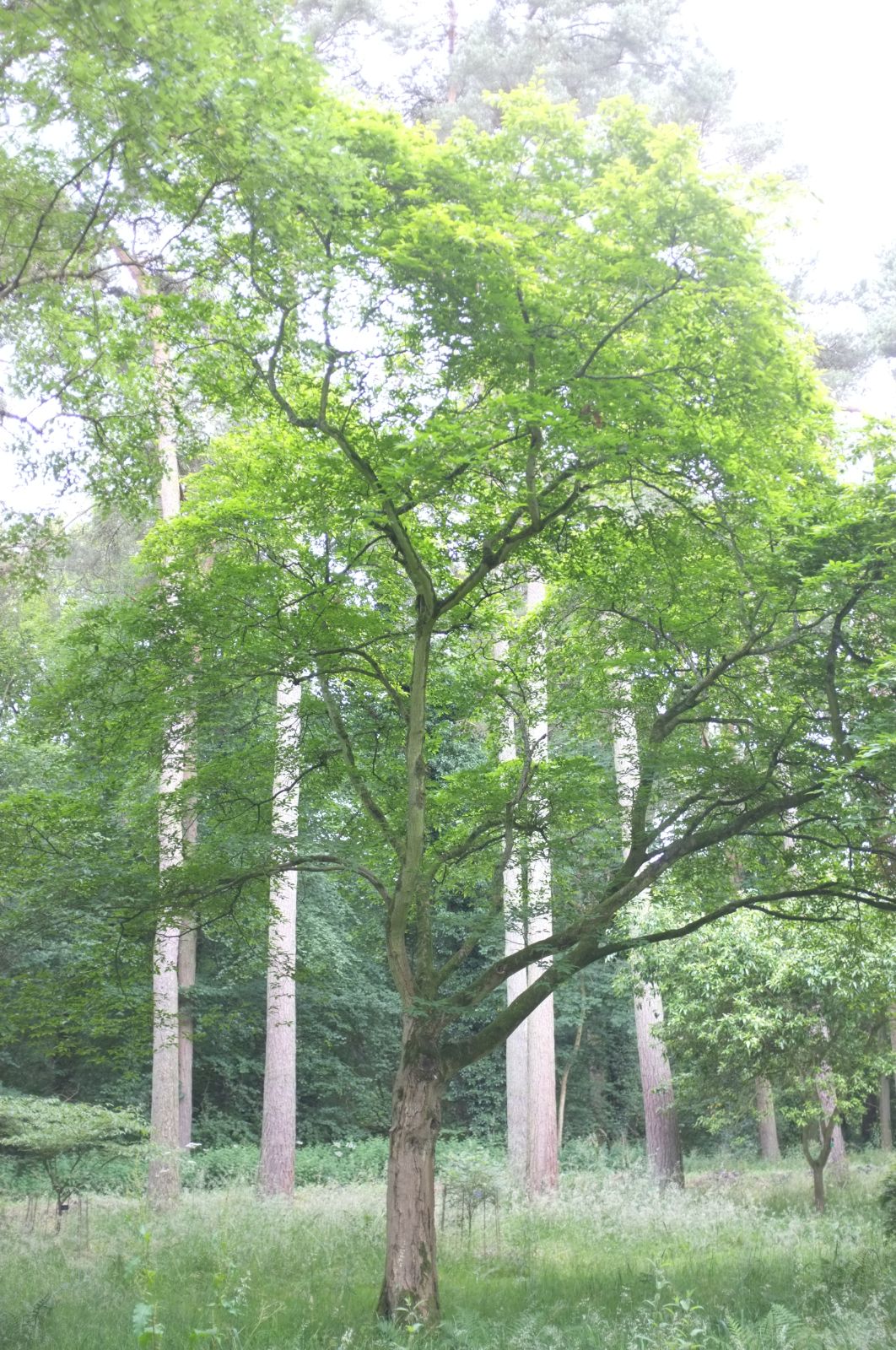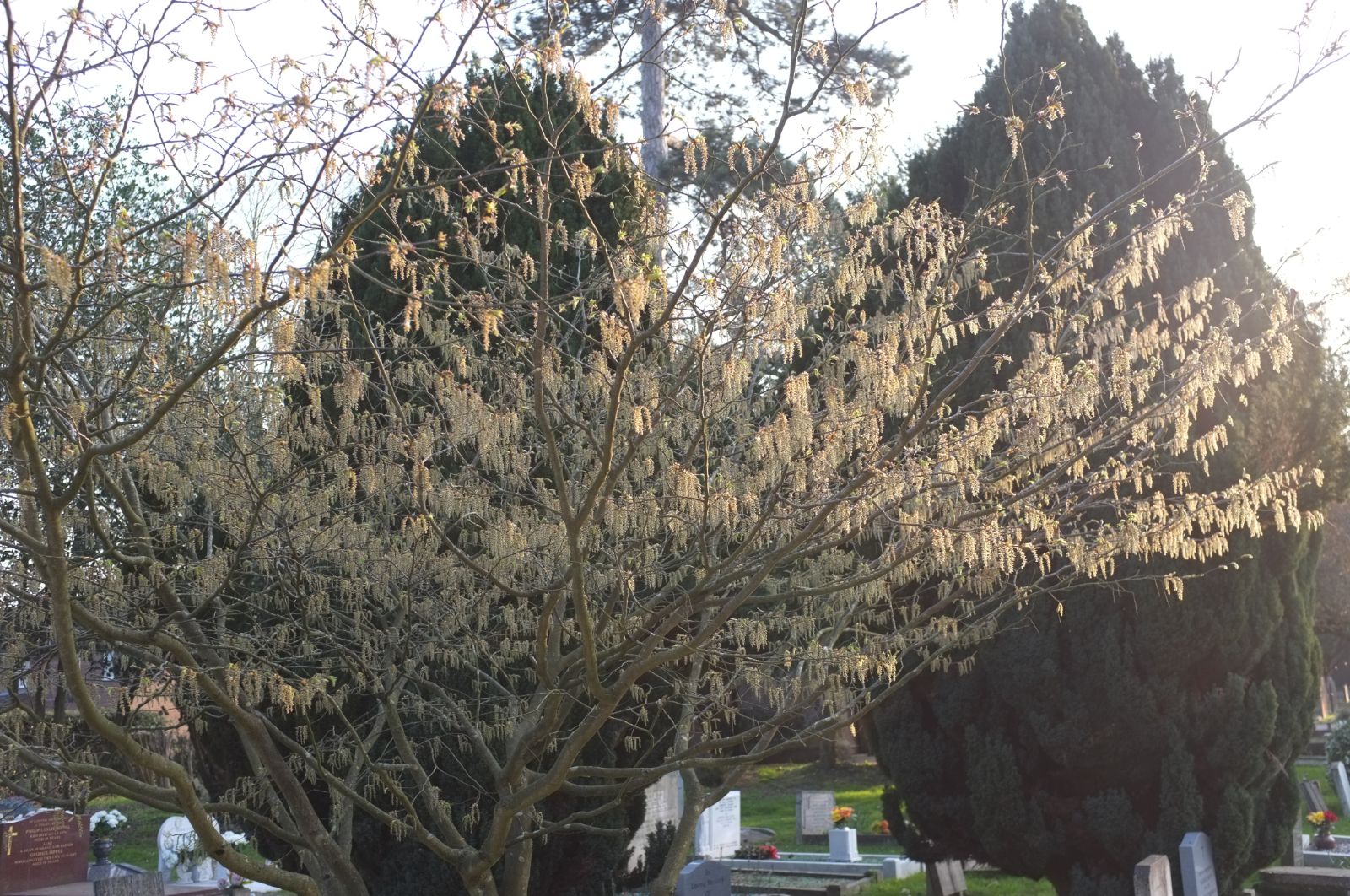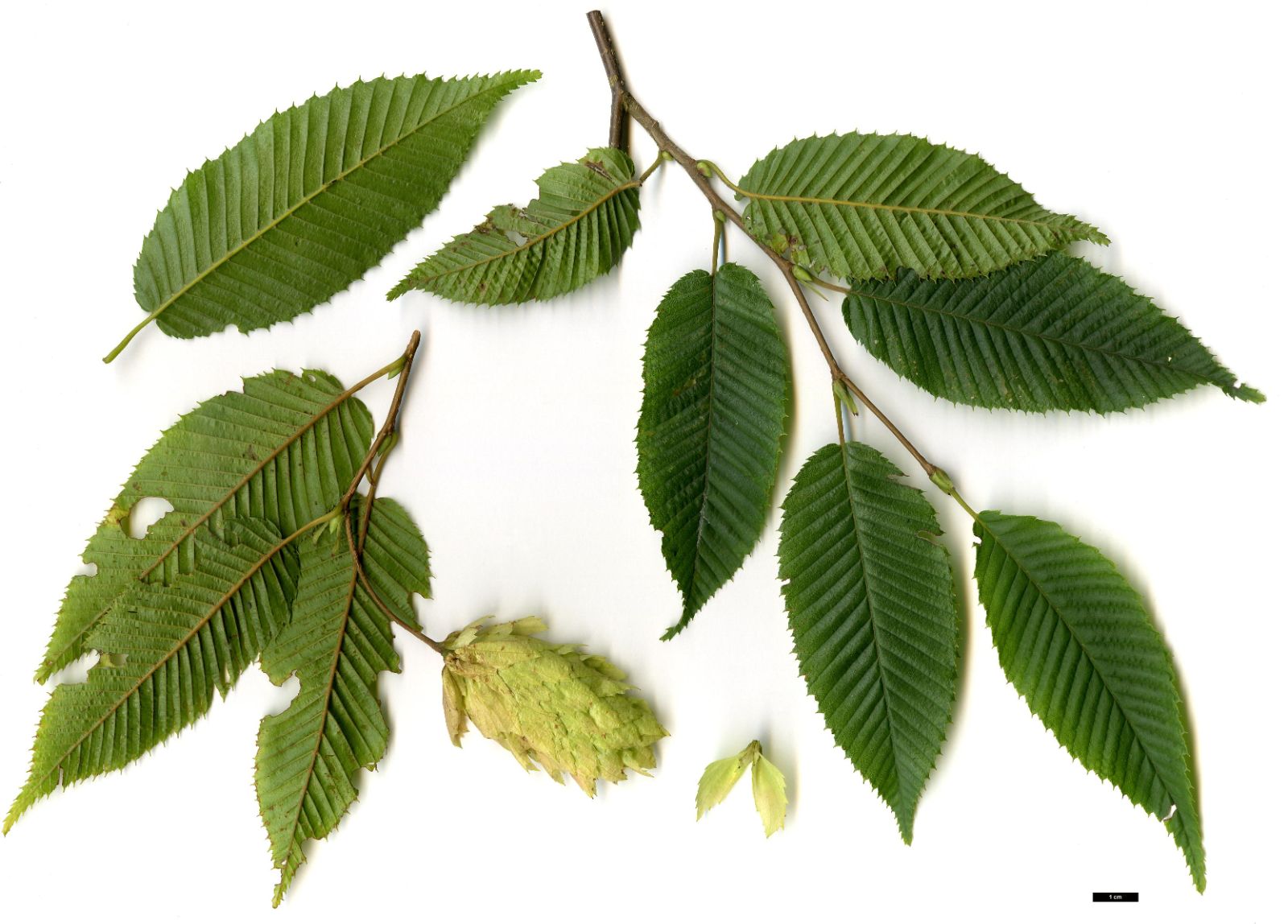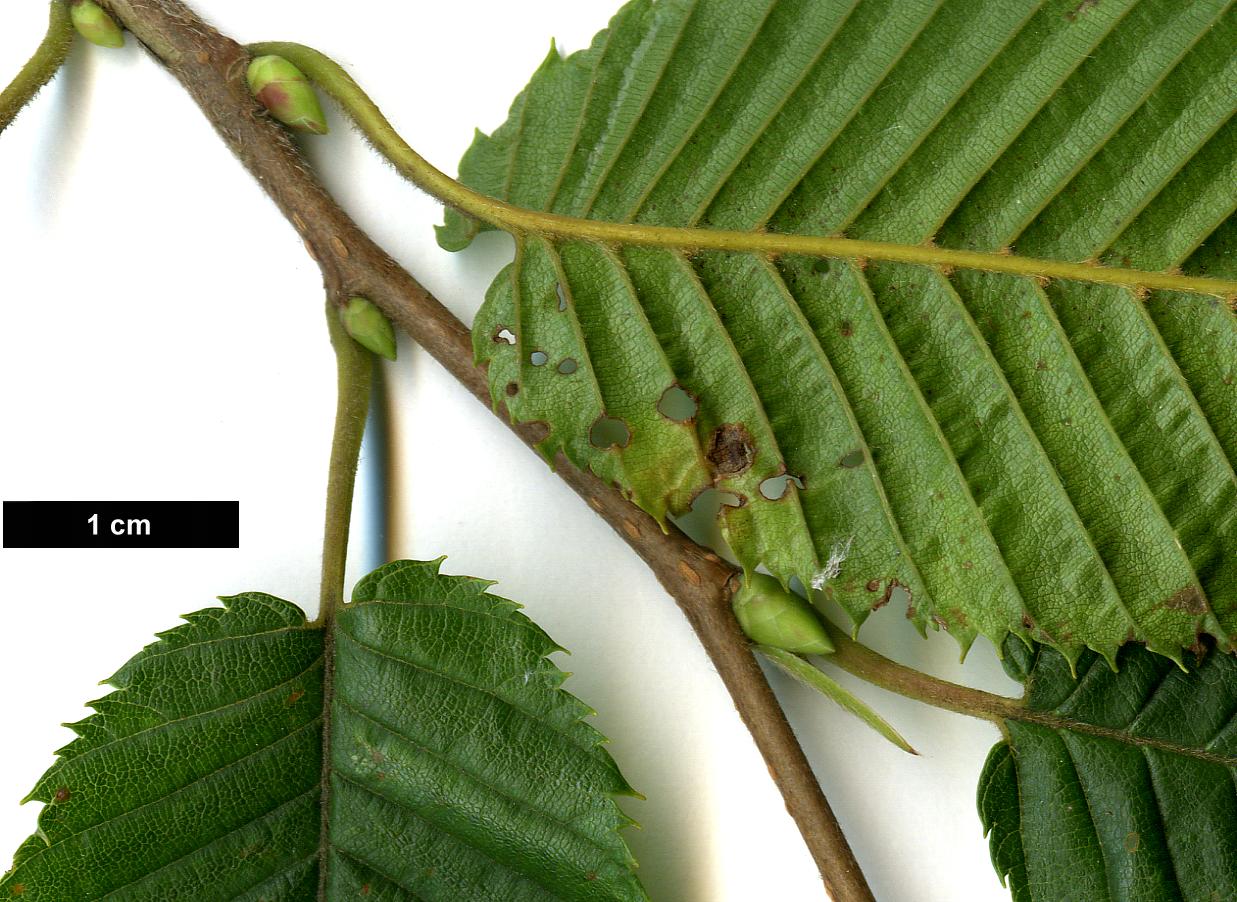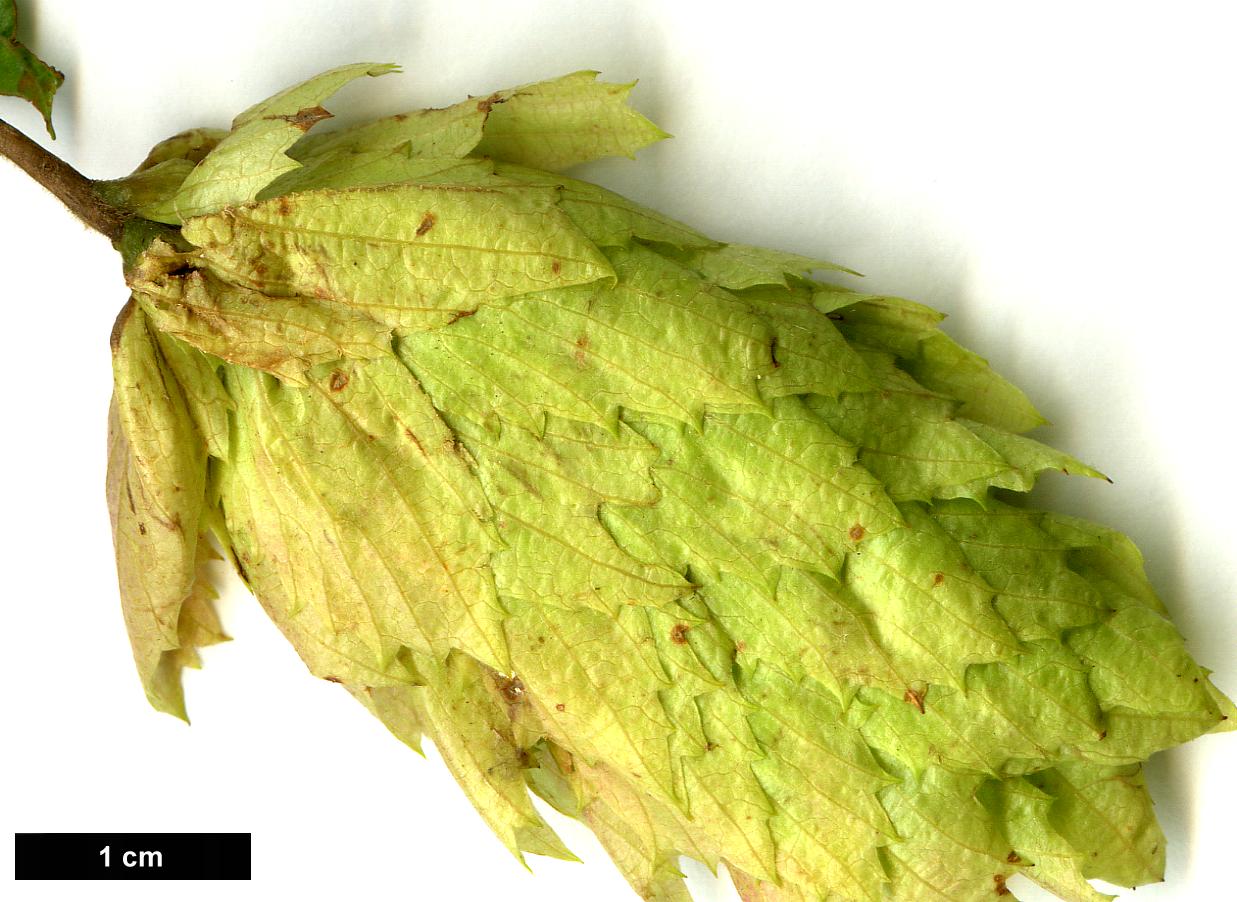Carpinus japonica
Sponsor
Kindly sponsored by
Lord and Lady Aldington
Credits
Owen Johnson (2022)
Recommended citation
Johnson, O. (2022), 'Carpinus japonica' from the website Trees and Shrubs Online (treesandshrubsonline.
Genus
Common Names
- Kuma Shide
- Japanese Hornbeam
Synonyms
- Distegocarpus carpinus Sieb. & Zucc.
- Carpinus carpinoides Makino
- Carpinus distegocarpus Koidz.
- Distegocarpus carpinoides Sieb. & Zucc.
Infraspecifics
Other taxa in genus
- Carpinus betulus
- Carpinus caroliniana
- Carpinus cordata
- Carpinus faginea
- Carpinus fangiana
- Carpinus fargesiana
- Carpinus hebestroma
- Carpinus henryana
- Carpinus kawakamii
- Carpinus laxiflora
- Carpinus londoniana
- Carpinus mollicoma
- Carpinus monbeigiana
- Carpinus omeiensis
- Carpinus orientalis
- Carpinus polyneura
- Carpinus pubescens
- Carpinus rankanensis
- Carpinus × schuschaensis
- Carpinus shensiensis
- Carpinus tropicalis
- Carpinus tschonoskii
- Carpinus turczaninovii
- Carpinus viminea
A tree to 15 m, often with a straight stem. Bark grey-brown, soon with scaly ridges. Twigs with silky hairs at first. Leaves narrowly oblong-ovate, 5–14 × 2–4 cm, broadly tapered; base rounded to cordate; apex long-pointed; lateral veins markedly parallel and deeply impressed, in 20–24 pairs; margin sharply serrate, singly or with large and small teeth alternating; upper surface dark green, pubescent along the midrib, lower surface remaining downy along the veins and with axillary tufts; petiole 6–12 mm, downy. Male catkin to 5 cm, with conspicuous narrowly-ovate scales c. 6 mm long. Female catkin to 7 cm long in fruit; bracts ripening whitish-green, closely overlapping, ovate, coarsely toothed, doubled over the nutlet on one side and with a small, almost free lobe covering the nutlet on the other side. (Bean 1976).
Distribution Japan
Habitat Mountain forests
USDA Hardiness Zone 4-5
RHS Hardiness Rating H6
Awards AGM
Conservation status Data deficient (DD)
Whilst Carpinus is a taxonomically difficult genus, the four ‘false hornbeams’ in Section Distegocarpus are comparatively easy to learn and make quite showy, memorable trees. Carpinus japonica has slightly less numerous lateral veins than the central Chinese C. fangiana and the leaf-base is less consistently heart-shaped than in the Taiwanese C. rankanensis or in C. cordata, which also grows in Japan but is not endemic to that country; most of the C. japonica’s synonyms result from the uncertain placing of Distegocarpus relative to Section Carpinus (Dong et al. 2022). The many lateral veins, neatly parallel and deeply impressed, the scaly bark, and the hop-like clusters of fruit with their whitish bracts are features shared by Section Distegocarpus and by the related genus Ostrya.
Carpinus japonica is one of the hardiest of its group and seems easy to grow, though like its closest allies it lacks the (potentially) bright autumn colours shown by most ‘true hornbeams’ (Dirr 2009). It was in Europe by 1895, when two were planted at the Royal Botanic Gardens, Kew (Bean 1976); one of these survived until 1981 when it was 9 m tall (Tree Register 2022). This is a more reliably arborescent plant than C. cordata, reaching 15 m × 36 cm dbh by 2012 at the National Botanic Gardens, Glasnevin in Dublin (Tree Register 2022). The species is now quite widely offered in the UK (Royal Horticultural Society 2020), and is one of the first oriental hornbeams to become available at large standard size for municipal use; by 2022 pleached specimens were offered as an alternative to the use of the native C. betulus within hornbeam allées (Majestic Trees 2022). Crûg Farm offers seedlings from BSWJ 10803 and BSWJ 11072 (Crûg Farm Plants 2020).
The species has survived at the Linnaeus Garden at Uppsala, Sweden since 2001 (Royal Botanic Garden Edinburgh 2022), and more recently at Arboretum Mustila in Finland (Arboretum Mustila 2022). It is also cultivated at the Dominion Arboretum in Ottawa, Canada (USDA hardiness zone 5a) (Stewart 2010). In the hot humid summers of the south-eastern United States it does best in some shade (Dirr 2009). This is one of rather few hornbeams to be offered in New Zealand (Leafland Wholesale Tree Nursery 2022).
'Chinese Lantern'
A selection with showy fruit, commercially available in the UK (Royal Horticultural Society 2020). An early planting has reached 5 m at John Ravenscroft’s Cherry Tree Arboretum in Shropshire (Tree Register 2022).
'Ebi Odori'
A compact Japanese selection with showy fruit, in the catalogue of the Nihon Kaki Nursery by 1981 (Hatch 2021–2022) and introduced to Brookside Gardens in the United States by Carl Hahn and Barry Yinger two years later (Hahn & Yinger 1983). It is preferred for bonsai work, and is said to come true from seed (Hatch 2021–2022). The name apparently derives from a sushi dish (‘dancing shrimp’), in which baby shrimps are eaten alive.
'Les Avettes'
An old Japanese clone with white-splashed leaves, a few entirely white; it has recently been introduced to France by Manon Rivière and Cèdric Basset (Pépinière des Avettes 2022).
'Silver Lace'
An attractive selection with deeply toothed leaves which shine in the sun with a silvery cast, now offered in the United States (Hatch 2021–2022).

